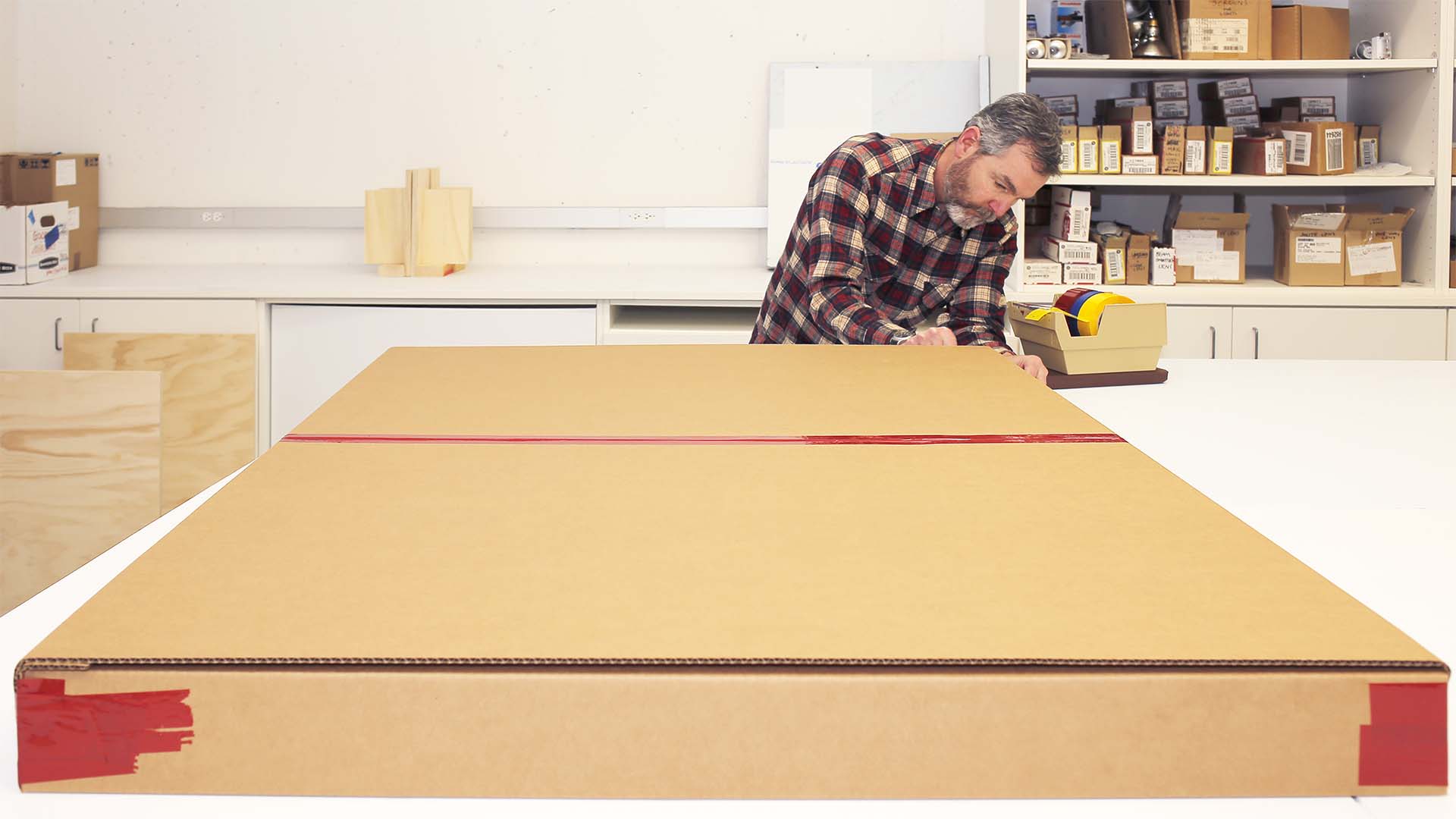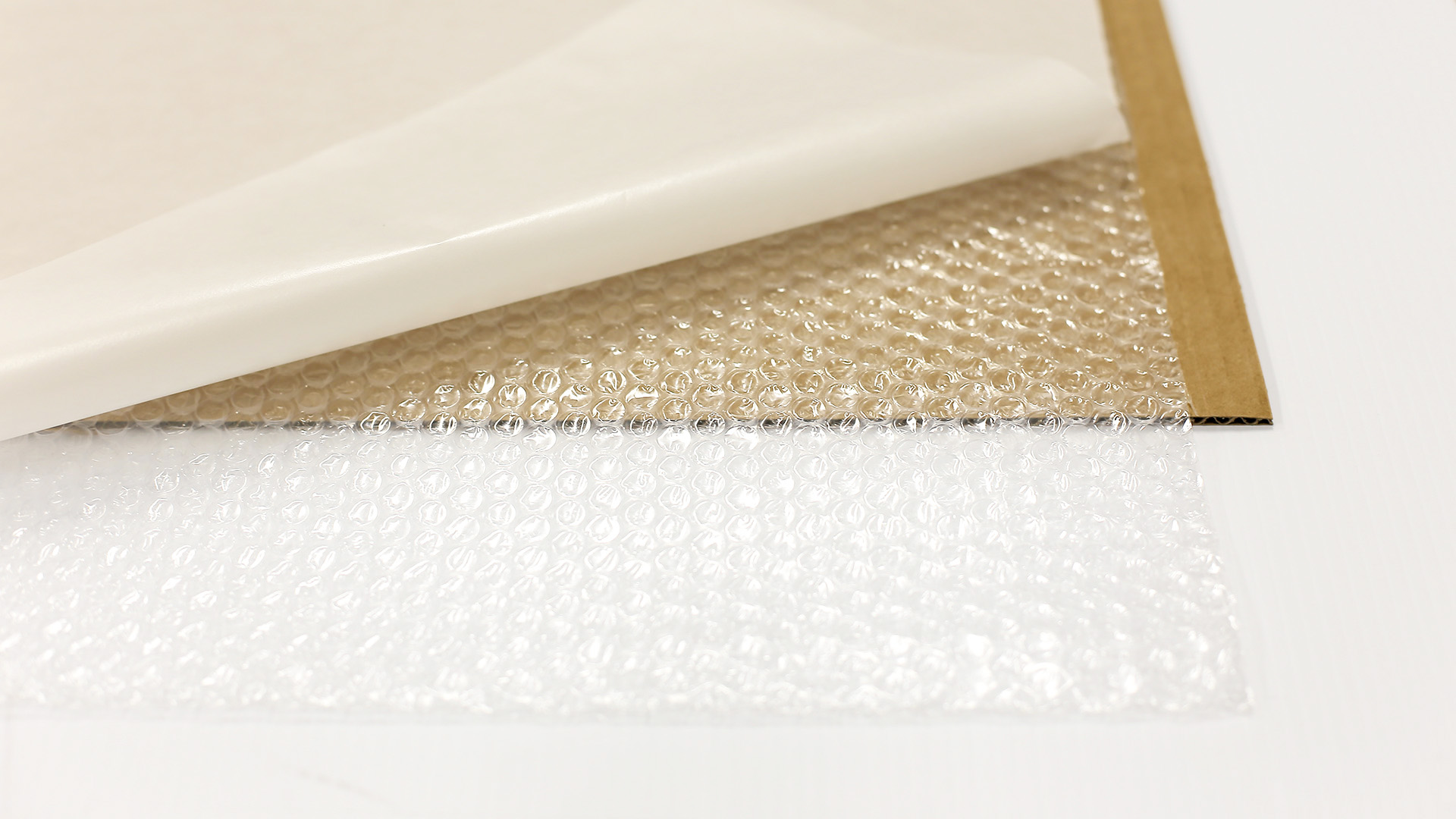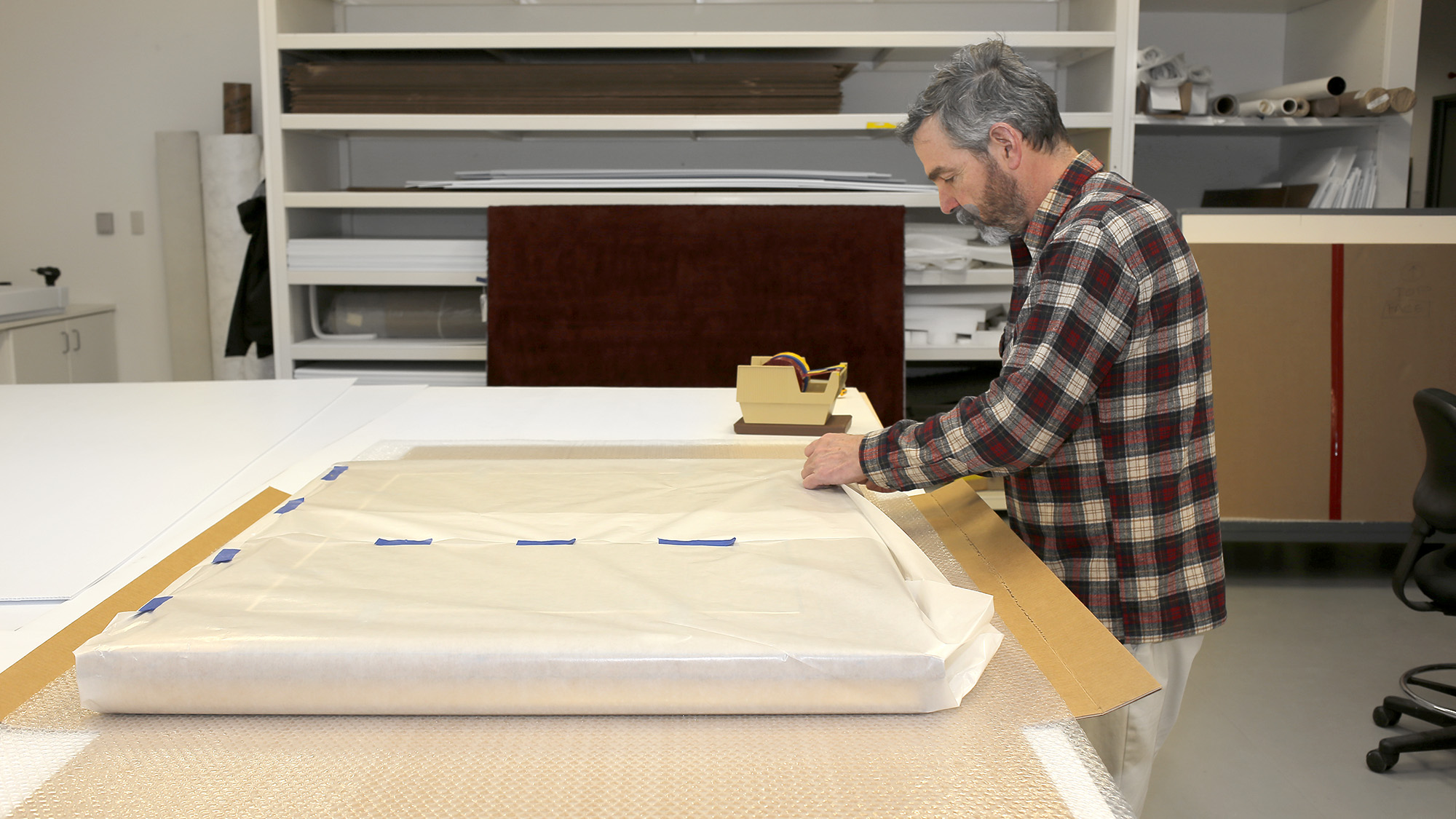SHIPPING
The Williamstown Art Conservation Center can arrange shipping and handling of artworks to and from our facility, depending on size and other considerations.
If we cannot accommodate your request, the staff can provide general advice and a list of shipping agents. Shipping arrangements will be made at the time conservation services are contracted.
A Guide for Transporting Objects to Our Facilities
It is important to ensure safe transport of collection materials. The packing of art objects for shipment is an important aspect of preventative care for both stable and unstable objects.
Packing materials need not be archival quality (pH-neutral) if they are not in direct contact with the objects. Guidelines for inner and outer wrapping and packaging are described below to ensure safe transportation of your art. Call us if you have questions, especially if the stability of the object(s) is a concern.
Stable Flat Objects
- Wrap each object in a clean smooth paper such as glassine, kraft paper, or tissue paper. Water-resistant polyethylene or bubble wrap is impermeable and should not be used in direct contact with the surface of the object. When using this type of material, be sure to first wrap the boards with paper as a barrier layer.
- Place the object between stiff boards. The boards should allow an extra 2 inches of coverage around all four sides of the object for protection in case the package is dented. The boards should be taped together and wrapped in a sturdy material such as Kraft paper.
Objects with Sensitive Material
- Packing material should not come into direct contact with the surface. If there is insecure material (see below), the object must be transported flat. If possible, place the object in a flat box without a cover and wrap glassine over the top of the box so that there is a gap between the surface of the object and the wrapping.
Objects with Friable Media Special care must be taken with objects with friable (insecure) media, such as pastels or charcoal drawings, which are especially vulnerable to vibrations and smudging. This includes objects where surface coatings or paint is flaking. Packing materials should not come into direct contact with the surface. The object should be shipped flat.
Modern + Contemporary Paintings Modern and contemporary paintings are often unvarnished or have been painted with acrylic paint. A young paint film or an acrylic painted surface can be soft right above room temperature and sensitive to impressions from packing materials.
Rolled Objects
- To avoid crushing, such objects are best rolled around the outside of a wide diameter (4-inch +) tube. Paintings should be rolled face-out. The tube should first be covered with a clean, smooth, barrier layer of paper, glassine, or polyester film. Roll the object around the tube and wrap another barrier layer of paper or film around it.
3-D Objects
- Three-dimensional objects that need cushioning should be placed in boxes or crates. Each object should be wrapped individually and packed with cushioning to prevent shifting in the crate.
Boxes Corrugated cardboard boxes offer a cost-effective choice. Use boxes that are clean and structurally sound. For added protection against crushing, shock, or vibration, consider double-boxing your objects by placing a smaller box inside a larger box with ample cushioning inside both boxes.
Crates Plywood, especially MDO (Medium Density Overlay) is the material most commonly used by museums for crating. Custom-built crates may be obtained from fine art shipping companies and can be built with a vapor barrier, such as hard Tyvek®, on the inside.
Cushioning Cushioning material helps to absorb shock and keeps objects stable during transit. It may also provide thermal insulation and a humidity buffer. Cushioning materials are essential especially for fragile objects or those with insecure media, and objects that must be sent framed or under glass.
Polyethylene or polypropylene foams with brand names like Ethafoam®, Volara®, or Microfoam® are typically used for packaging. Polystyrene foams such as Styrofoam® can also be used, but are less desirable due to chemical instability for long term storage.
Filling the crate or box with plastic peanuts also provides a cushion. As always, the objects should be wrapped first.




